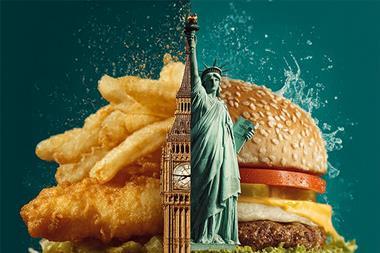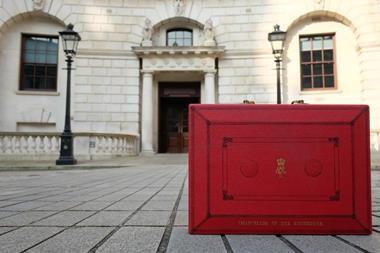The geek-chic generation is upon us. Knowledge equals power and the more intellectual the content, the better. Brand marketers now need to be aware of this trend and will need to inform and inspire simultaneously if they’re to gain this intelligent group’s attention, argues Lara Piras of Voxburner
Being knowledgeable is important to 80% of 16 to 24-year-olds. It’s now deemed cool to be knowledgeable, and young people are engaging in learning for entertainment purposes. What were once classed as ‘boring subjects’ are now being shared and followed on social media by millions all over the world. Take Facebook page ‘I Fucking Love Science’, for example. It currently has more than 20 million likes, while NASA boasts 7.3 million followers on Instagram, National Geographic has a whopping 38.8 million followers on the ultimate youth platform, putting them into the same Instagram rankings as Beyoncé and Justin Bieber.
Science is one of the top subjects our respondents enjoy reading about the most, gaining an impressive 48% within a category of 12 alongside technology (43%), current affairs (50%) and lifestyle (52%). The new youth consumer uses knowledge as power and brands should take note. Don’t underestimate this generation’s capabilities as they are learning via digital means, in ways their elders weren’t able to. Experiment, the Kickstarter for funding and learning about scientific discoveries, perfectly taps into this trend because it offers young people a way to learn about advances in science: “You can fund a dinosaur fossil excavation, a historical study of medieval monasteries, or an experiment on the International Space Station. If it helps unlock new knowledge, then we can fund it. We have the technology.”
The unlimited access to information has made 16 to 24-year-olds curious to learn even more and wanting to engage in content that’s informative and intellectually stimulating. It needs to, of course, be delivered in a format that’s still digestible and sharable so they can boast about what they’ve learned to friends. Brands that inform and inspire simultaneously will come out winning in 2016 and beyond.
Young people are now becoming the content creators to watch. Brands are actively seeking out YouTubers, vloggers and creative individuals with an online cult fan base to represent their brand. Some 46% of 16 to 24-year-olds publish their own content including photos, videos and blog posts to their hundreds, if not, thousands of social media followers. Companies are co-creating with the youth of today rather than producing content on their own, resulting in a more organic, relevant and relatable flow of brand engagement.
For young people, marketing content that involves famous faces no longer resonates. Some 81% of 16 to 24-year-olds relate to brand campaigns more if they use ‘real’ people as opposed to celebrities or models. As social data network BazaarVoice also cleverly notes, “Millennials trust people over brands.” Marketers should now understand the youth sector wants inspiring, relatable individuals to represent its favourite labels. This has reached the point where content teams are now heavily reliant on ‘influencers’, (non-celebs and creative individuals with a huge social following and potential to transform content into sales). US advertsing platform Technorati puts the value of influencer marketing at
$2.4bn (£1.66bn), and with 92% of people trusting recommendations from people they know, it’s no wonder that it is one of the fastest-growing marketing mediums in the past five years”.
Upon collaborating, brands should really showcase why these young individuals are worthy of being the content focus. Passion films talking about the person’s inspirations, career, future goals and how the brand fits into their life make for an engaging watch. Take footwear brand Supra for example. To launch a new range of running shoes, their #alwaysontherun campaign featured online influencers who were the stars of the content surrounding the theme. In addition to creating more than 15 individual passion films featuring the product, timely Instagram posts with each character interpreting the product in their own unique way resulted in engagement numbers in their millions.
Good news for marketers – 57% of young people don’t care whether a vlogger, Instagrammer or blogger has been paid for a post to reference a certain brand or product. This doesn’t mean you should be transparent. Authenticity is still key but, looking forward, it’s good to know that these young people can’t be tricked any more. They know exactly why you’re using this formidable marketing technique. Looking to the future, think about how you can build on these ideas, especially as the concept is becoming so transparent. And even more so because new rules from the Advertising Standards Authority mean any brand influencer collaboration must be clearly marked as an ad. Take inspiration from them, but think of fresh ways to use these inspiring individuals as they will continue to be a key mascot to your brand in 2016 and beyond.
Young people just aren’t getting the balance right when it comes to consuming digital media. They switch from binge watching to enforced digital downtime at the frantic pace of a teenager’s mood swings. Some 20% own up to being serial binge watchers, while another 66% binge watch when they feel like it. At the same time, 44% dedicate between one and 5 hours to digital downtime per week. It’s fair to say the youth sector are increasingly living in temporary extremes, abstaining from content one minute and indulging the next.
A number of intriguing services are reacting to this trend, especially within the education sector where digital distractions can cost young people crucial A grades. Cold Turkey, for example, allows the user to decide which website or apps to block. Tempting platforms such as Facebook or Tumblr can be blocked for a set period of time, or on a recurring schedule. This gives users complete control over their technology experience. It allows them to schedule and optimise their time spent working, while still allowing them to feel connected when it’s time to relax.
New brands are also helping this movement by filtering online content to minimise time spent consuming. Helping to get the balance right are Readbug, dubbed ‘the Twitter of magazines’, it’s an indie zine-filtering app that battles content overload by making it easier to decide, “what you read, what you take away and what you share”. Brands should start to think about how they can help young people digitally chill out. There’s been a resurgence of ‘Slow TV’ lately, a term used for a genre of live ‘marathon’ television coverage of an ordinary event in its complete length. A prime example is BBC Four’s new series of 30-minute, beautifully filmed programmes devoted to such time-consuming activities as glass making and wood carving. Taking this into youth territories is Tumblr TV; continuous GIFs that are currently trending across the platform can be played, paused, fast-forwarded and rewound, offering hours of bite-sized, Flash content.
Busy youth consumers will appreciate brands that tap into these rather sedate moments. A huge 78% feel digital downtime is important to them and 51% don’t feel they have the right balance between the two extremes. As trends and insight network LS:N Global perfectly states: “In the information deluge of the internet, people are more desperate than ever to find moments of peace amid the hubbub – yet for most brands, marketing means competing with ever-increasing neediness to be your funny friend on Facebook. Slowing down and daring to be boring could be the best thing you ever do.”
■ All statistics (except where referenced) are taken from an online survey conducted by Voxburner (1,095 UK 16 to 24-year-olds took part between Oct 2015 and Dec 2015).
■ Lara Piras is content manager at youth insights consultancy firm Voxburner











































